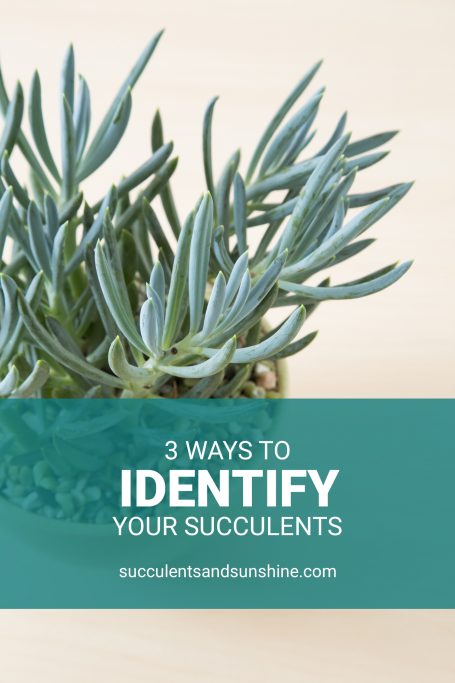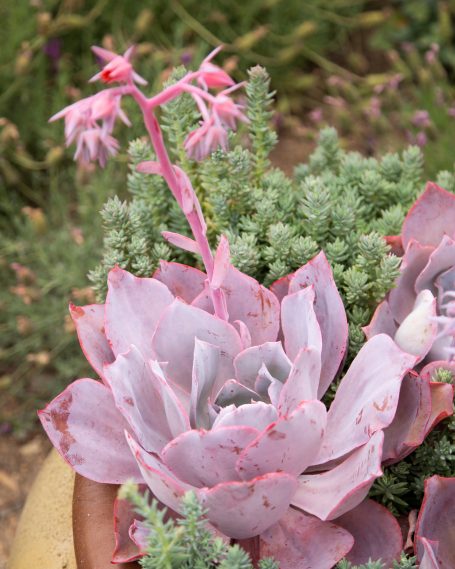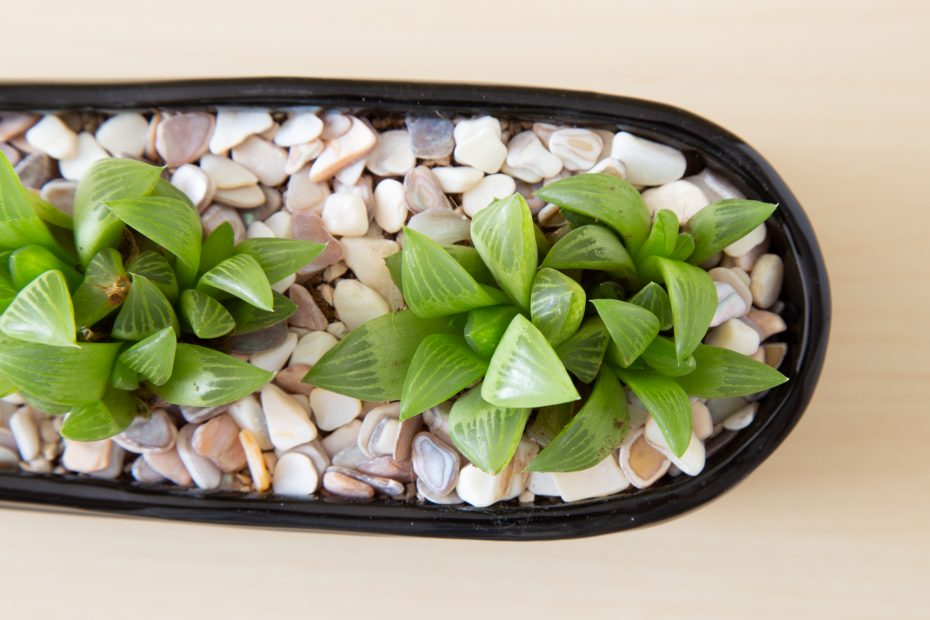5 Ways to Identify Your Succulents
Knowing what types of succulents you own can help you better care for them because not all types of succulents need the exact same care. Use the methods in this post to determine what succulents you own!
Succulents and Sunshine is reader supported. We may earn a commission, if you purchase through links on our site, such as Mountain Crest Gardens, Amazon, or Etsy. We only promote products we use and trust.
When I first started collecting succulents, being able to identify them seemed like a nightmare. You've likely found that many places you buy succulents locally don't label the specific genera or species of succulent.
Even a specialty store by my house just labels them as “Succulent Variety” or “Cactus Variety”. It didn't bother me initially, but now it drives me crazy!
There is enough variation in lighting and water requirements that it is important to know what types of succulents you have.

There are thousands of varieties of succulents and some look quite similar. While it's nice to know 100% what type of succulents you own, getting close enough is what really matters.
Over the last few years I've found some great resources for getting help with succulent identification and you'll find them below. Go with whatever method works best for you and try to get at least the genus of your succulent, and the species if possible. You may also be able to get a cultivar name as well.
Here's a great walk through of how to go about identifying your succulent:
But first…
Start with a good photo
You'll always need a good photo to ID your succulent (unless you are asking someone in person). Try to photograph the plant on its own rather than in an arrangement.
If it is in an arrangement, try to crop or zoom in so that only the plant in question is visible. However, make sure you can see enough of the plant that people can identify it.
If your plant is in bloom it's generally even easier for people to ID it. Be sure to capture a separate picture of the flowers or include it in the main photo if you can. You don't have to have the photo of the bloom, but for specific species it makes things a little easier.

Make sure the succulent is well lit. If you are photographing in a dark area or sometimes indoors, you may get a weird color cast which can make the color of the plant look different.
The moral of the story is get the best picture you can of your succulent. The better the picture, the more likely people will be able to identify the plant.
Upload the photo to Google Search
Google search has a function that will allow you to upload your photo and do a search on it. While it isn't 100% accurate (most of the ways here are not perfect) it's enough to get you started in the right direction.
I'll often use this to help me determine the Genus of a succulent and then do a few more "word" searches from there to narrow things down more.
Join the Succulent Lovers Club!
As you already know, I feel quite strongly that you should know the names of the succulents you own. That's why as part of the Succulent Lovers Club there's a section where you can upload your photo and the Succulents and Sunshine Team (along with other club members) will identify it for you.
You can post as many pictures as you want! Just sit back and wait for the reply. We'll do the hard work for you.
Plus, in addition to getting the name of your succulents, you'll also get an amazing course which teaches you how to help your succulents thrive! Plus, you can upload photos of succulents you need help with and get personalized feedback on how to help them.
Definitely check out the club to get help with your succulent IDs and learn a lot more!
Facebook Groups
I love posting my photos to Facebook groups to get IDs. I'm usually able to get a response within a few minutes. Plus, it's fun to be a part of a succulent group!
I've found people in Facebook groups are more likely to give you feedback or tips than members in a forum. Here are a couple groups you could request to join:
Always be sure to thank the people that have replied with suggestions! Being interactive in these groups is also highly recommended. In general people like to help those who are interacting with them or are involved in that community.
Types of Succulents Page
I've got a great new resource that I'm so excited about! It's my Types of Succulents page. On it are different varieties of succulents, updated weekly.
There are images of specific succulents, along with care and propagation information, as well as reader's experiences!

Garden Web Forum
The Garden Web Forum is a very reliable way to get an ID for your succulent. You'll need to set up an account in order to post in the forum, but it's free and really easy.
Once you have an account you'll need a photo of your succulent. Upload your photo as part of your post.
If you have a guess about the genus or species, say so in your comment. A lot of times that can help get things moving more quickly.
Don't post more than 3 or 4 succulents for identification in a post. It will make it harder for people to give you the correct answer for a specific photo, plus it's asking a lot of the forum members.
Instead, post a couple pictures once a week or every couple of days.
I'd recommend turning on the option to get updates about your post via email. That way you don't have to check back on the website to see if someone has left a comment.
Generally people on this forum respond pretty quickly and sometimes reply in just a few minutes. Be sure to thank the people who've helped you!
The Succulent Plant Page Gallery
This Gallery of Succulents is another option, though it does take a while to scroll through and match up your succulent with those in the list. If nothing else, you'll likely come away with at least the genus of the plant, which is a great place to start!
Phone Apps
Another tool to help you identify your succulents identified is by using your phone! There are many plant identification apps out there, for both Apple and Android, but some readers have had better experiences with these:
- Pl@ntNet via Google Play Store or App Store
- iNaturalist via Google Play Store or App Store
- PictureThis via Google Play Store or App Store
You can also try using Google Lens.
One thing to note with these apps (and most identification solutions) is they aren't perfect. They should get you in the right direction though.
Drought Smart Plants
A great option for identification is an app put together by my friend Jacki at Drought Smart Plants called Succulent ID. You can look at different genera of succulents or search through photos based on characteristics of your succulent.
She also has an ebook just for identifying Sempervivums which you can get here.
Once you get a name…
Something to keep in mind, once you have been given the name of your plant do a quick search on Google images for that name. See if the majority of the photos there look like your succulent. If they do, awesome!
If not, use that name as a starting point. Ask people if they think it's that plant or if it could be something different. Young plants can be harder to identify than well established plants, so realize you may not get a definite answer.
There are a lot of different cultivars and hybrids with succulents as well. That can cause some confusion with identification. As long as you have at least the genus right and a good guess on the species, you'll be on your way to being able to better care for your succulents.
I'd also highly recommend using the Succulent Tracker app to record the name of your succulent once you've got it. Take a picture and add in any other information you know about the plant. Then use the app to keep track of when you water your succulents so you don't kill them.
Then, I'd also suggest learning a bit more about that succulent variety. I have an ebook dedicated to helping you learn which succulents you should grow based on where you live, how often you like to water (or remember to water) and more. It gives growing information for over 75 succulents too!